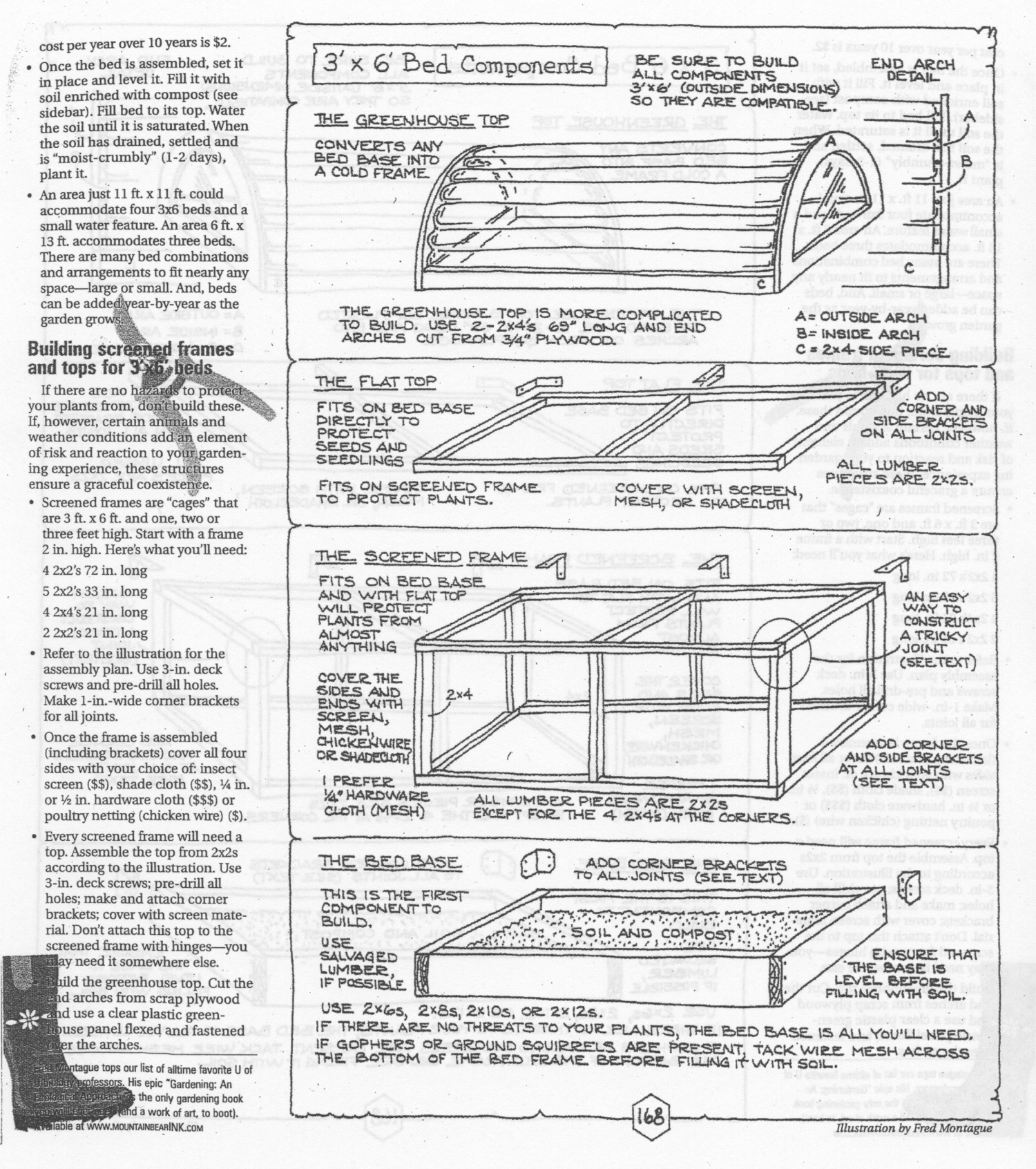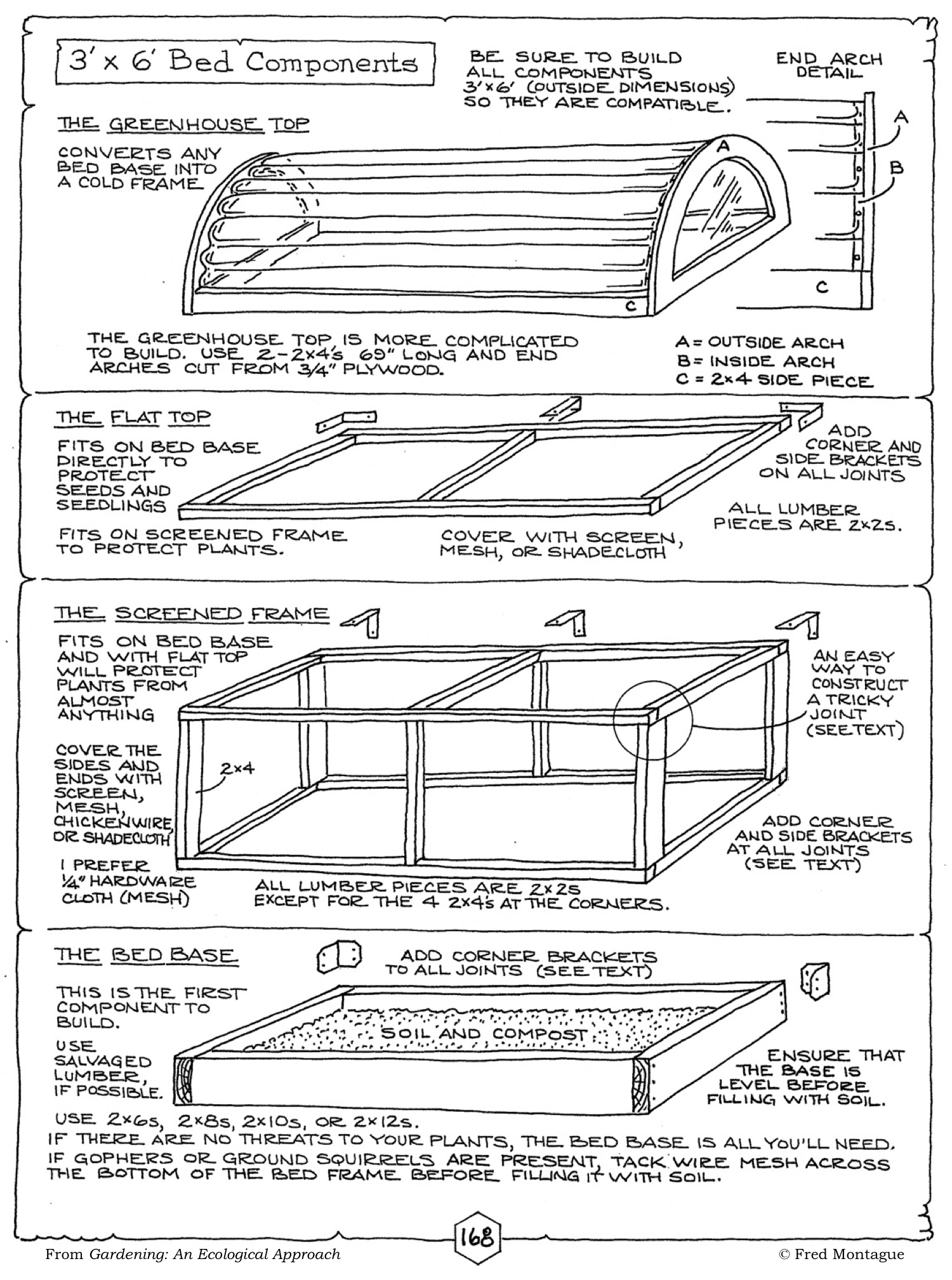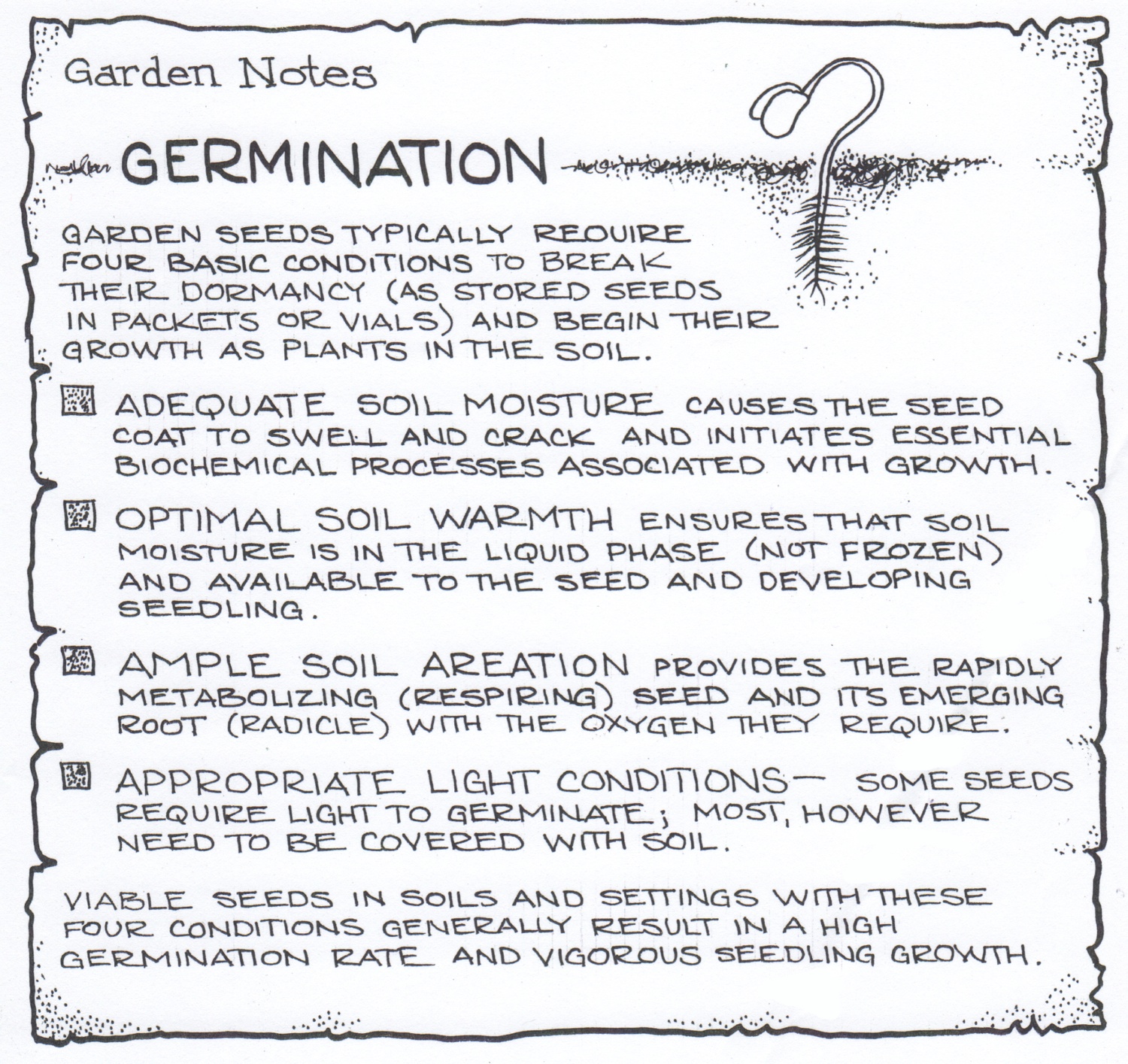Now's the time to be thinking about starting seeds for your summer garden. Here's a page from Gardening: An Ecological Approach to get you started.
Your Custom Text Goes HEre
Now's the time to be thinking about starting seeds for your summer garden. Here's a page from Gardening: An Ecological Approach to get you started.
Those of you who have my book Gardening: An Ecological Approach know that I favor 3' x 6' garden beds for many garden plants. Reproduced below is an article from Catalyst magazine, April 2011, and an additional illustration from my book.
Now is a good time to be building these beds so that they may be installed as soon as the garden soil can be worked this Spring.


Here's a larger version of the 3' by 6' bed schematic, also found on page 168 of Gardening: An Ecological Approach.

As another garden season approaches, the thoughtful gardener might consider the basic conditions required for most seeds to germinate.

This review is especially important when we plant seeds indoors in pots or in flats.
While warmth is generally not a problem indoors, the interacting characteristics of soil moisture (watering) and soil aeration are always tricky.
The key is a seed-starting medium with optimal texture--some larger particles (sand or perlite) to create air spaces between them and organic matter and smaller particles (e.g., silt) to hold soil moisture.
Water the pots and flats by placing them in a tray of lukewarm water. Make sure there are drainage/uptake holes in the bottoms of the planted containers.
When the surface of the soil in the pots is moist, remove them from the tray of water. Bottom watering prevents seeds from being disturbed as they might be if watering from above.
Repeat the watering process as the flats or pots dry out. Until the seedlings emerge, keep the soil surface just moist.
When the seedlings emerge, be careful not to overwater them.
If you aren't sure about what the seedlings and soil are telling you, plant enough containers so you can try different approaches.
Experiment, Learn, Enjoy.
If you are thinking about growing a garden this year, or if you are a dedicated gardener, sometimes its worthwhile to consider how individual actions can have large beneficial effects. Consider this page from my book Gardening; An Ecological Approach.

"The Simple Act of Tending a Garden," a page from Fred Montague's Gardening: An Ecological Approach. © Fred Montague
For the past eight issues of Edible Wasatch magazine I have written a series of essays derived from my book Gardening: An Ecological Approach.
These short pieces discuss, one-by-one, key ecological concepts and principles that make up the rule book for living on Earth. Of course, they are most applicable in wild places, and they are least well-applied in intensively occupied urban areas (at least as we usually occupy them). A backyard garden, however, in town or in the country, still expresses the principles and still promotes the processes (e.g. energy flow, material cycling, soil formation, carbon sequestration, etc.) that make life possible.
You may read the following via the "online editions" page at Edible Wasatch.
"Backyard Biodiversity" Fall 2012 pp. 56-57
"There Are Limits" Summer 2012 pp. 56-57
"Global Conservation, Backyard-Style" Spring 2012 pp. 50-51
"The Intimacy of Global Nutrient Cycles" Winter 2011-2012 pp. 44-45
"Solar-Powered People" Fall 2011 pp. 44-45
"Soil Matters" Summer 2011 pp. 44-45
"Ecologically Competent People" Spring 2011 pp. 44-46
"Diversity and Sustainbility" Winter 2010-2011 p. 28